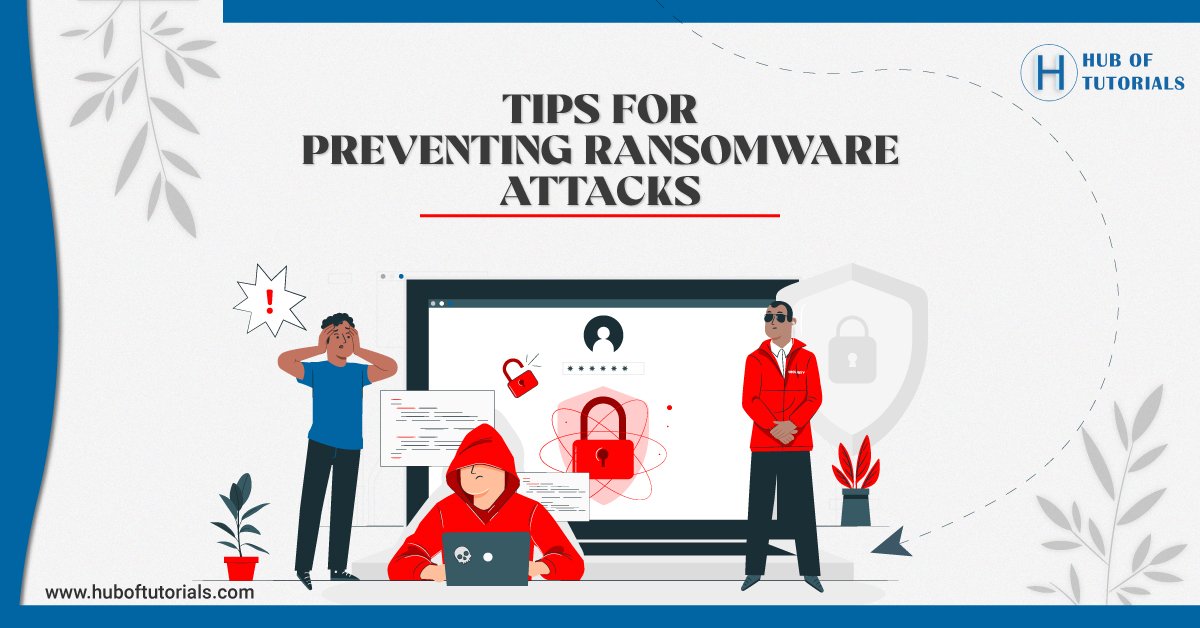While cybercriminals continue to evolve their methods, businesses must remain vigilant. From backups to antivirus and firewalls, cybersecurity is a key defence. Immediately disconnecting an infected device from all wired and wireless network connections can help limit the spread of ransomware infection. Additionally, victims should report the attack to authorities for additional support and insight. In this article, you will know 5 Essential Tips for Preventing Ransomware Attacks.
Tips for Preventing Ransomware Attacks
1. Install an Antivirus Software
It is essential to install antivirus software to prevent ransomware attacks. This type of malware can cause serious business problems, including lost productivity and downtime. Installing antivirus software can help prevent these attacks by identifying suspicious files and blocking them before they reach your computer.
So how to prevent ransomware? Avoid clicking on unknown links in emails, text messages, and social media. These malicious links may initiate an automatic download and infect your system with ransomware. It is also important to keep your programs and operating systems updated as often as possible to ensure they have the latest security features.
Many ransomware threats target vulnerable systems that have not been updated for some time. For example, the notorious WannaCry ransomware attack in 2017 affected dozens of UK hospitals and large companies like telecommunications giant Telefonica, chip maker Apple, and Taiwan Semiconductor Manufacturing Co.
It is also crucial to create and enforce a password policy. Weak passwords can allow hackers to brute force their way into an account and gain access to sensitive data. This can then be used to spread ransomware throughout a network. Lastly, it is crucial to employ a data backup and recovery plan. This will limit the impact of ransomware and expedite the recovery process.
2. Install a Firewall
Many antivirus software programs include firewall protection, which is often part of any comprehensive security solution. Firewalls help review North-South traffic and prevent malware actors from infiltrating your network. However, these tools can be less effective at scanning East-West traffic for lateral movement or data exfiltration signs.
A firewall can also block web browsing and ensure that users are not visiting malicious websites that could download malware or expose sensitive data to attackers.
Another way that ransomware gets into computers is through USB devices and CDs. This is because Windows’ AutoPlay feature can instantly run files on these media types, and malicious actors have been known to hide ransomware inside seemingly benevolent devices. To avoid this, disable AutoPlay and use only known media sources.
The best way to prevent ransomware attacks is to take a layered approach that includes antivirus software, a firewall, and a backup storage solution like cloud computing. Please back up your data frequently, and always save it to a location that isn’t connected to your computer (e.g., a remote storage device or the cloud). It is the best option in the Tips for Preventing Ransomware Attacks.
3. Change Your Passwords
Changing your passwords is an easy step to prevent ransomware attacks. Make sure you use a unique passphrase for each account and change it regularly to help keep cybercriminals from accessing your accounts. You can also enable multi-factor authentication (MFA) on all your accounts to further secure them. Speak to your IT provider or refer to the ACSC guidance on MFA for more information.
Many ransomware infections begin with an infected attachment sent through a phishing email. This is why staff awareness training should be near the top of your list of cybersecurity priorities. Consider using an email security solution that uses user and entity behaviour analytics (UEBA) to monitor the behaviour of your staff and flag or block suspicious emails for further review.
System backups are a valuable recovery method following a ransomware attack and should be considered alongside your existing disaster recovery plans. However, the best protection against ransomware is to avoid an attack in the first place by keeping your systems up-to-date with all patches and updates. In addition, consider implementing software restriction guidelines to prevent the running of apps in ProgramData, AppData, Temp, WindowsSysWow, and other locations.
4. Disable File Sharing
Cybercriminals often use file sharing to spread ransomware. The ransomware virus encrypts data across networks and computers and demands money to unlock files. This can cause major downtime and damage a company’s reputation. Fortunately, businesses that follow security best practices can prevent ransomware attacks and avoid paying a ransom.
Turning off file sharing is one of the best ways to prevent a ransomware attack. This will prevent the virus from encrypting files and spreading to other systems. It’s also a good idea to keep software and operating systems updated, as these updates often include security patches.
You can further bolster your defences against ransomware by using Software Restriction Policies, which allow you to designate where applications are allowed to download and execute. This can help reduce risk, as attackers frequently target ProgramData, AppData, Temp, and WindowsSysWow to host their malicious processes.
In addition, you can implement Zero-Trust Network Access to give employees only the resources and services they need. This can help protect your business from ransomware attacks through the Remote Desktop Protocol or other exploitation points.
5. Disable Public Wi-Fi
Cybercriminals are constantly evolving their methods and attacks. Businesses must take steps to keep up with these changes to prevent ransomware from occurring.
Enforce a strong spam filter and use authentication technologies such as Sender Policy Framework (SPF), Domain Message Authentication Reporting and Conformance (DMARC), and DomainKeys Identified Mail (DKIM) to reduce the number of malicious emails entering the network. Implement a strong patch management strategy and keep all operating systems up-to-date at all times to help close security gaps that attackers could exploit.
If a device is infected with ransomware, shut down the infected system and disconnect any hardware cables that are attached to it. This will prevent east-west spread and give the security team more time to identify and isolate the ransomware.
Ensure backup copies of all critical information are stored offline or in the cloud. This will minimize the impact of any ransomware attack and can help companies avoid paying a ransom to recover their data. Additionally, it’s important to test the reliability of backups regularly.
Also Read:- 9 Ways to Protect RDP

